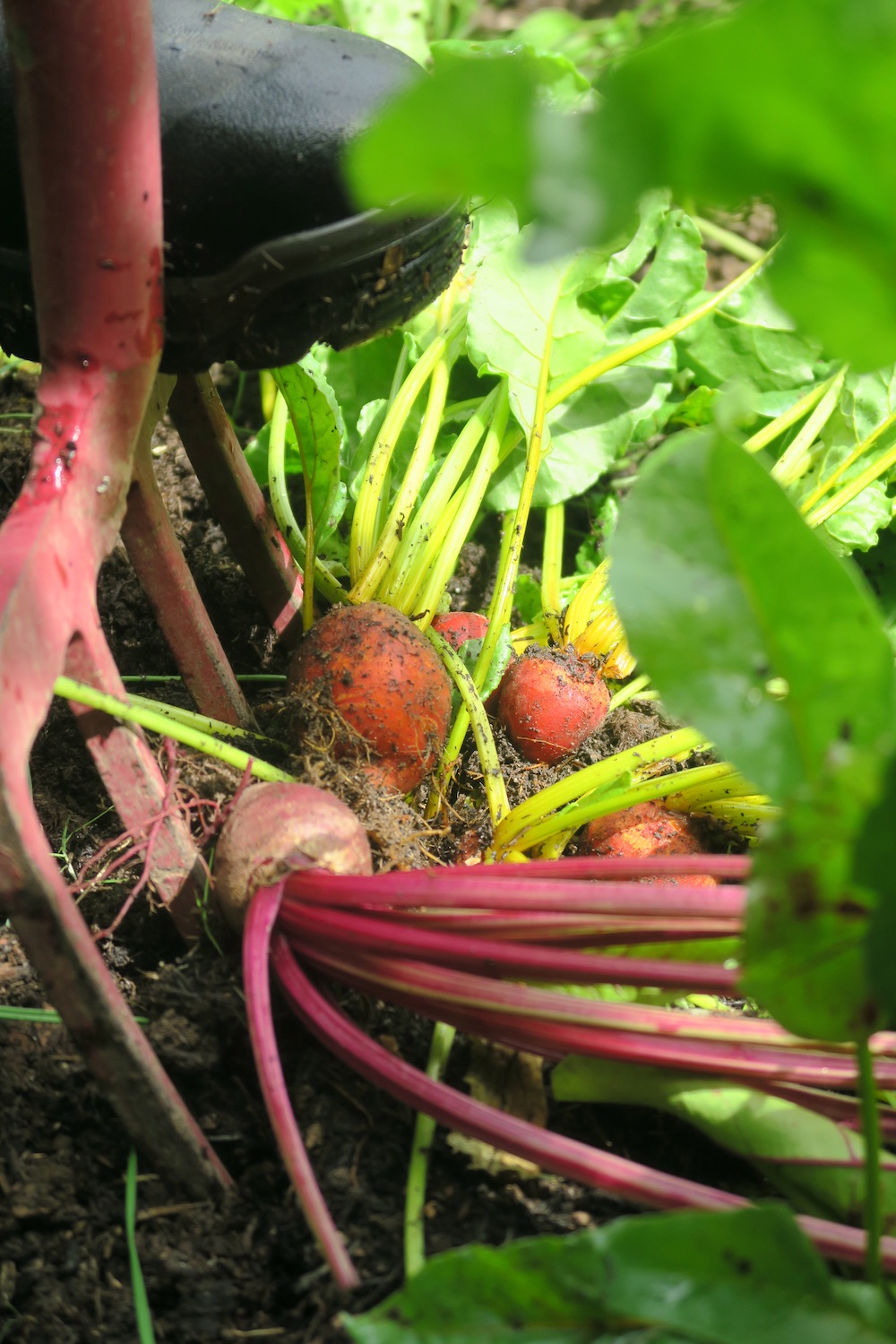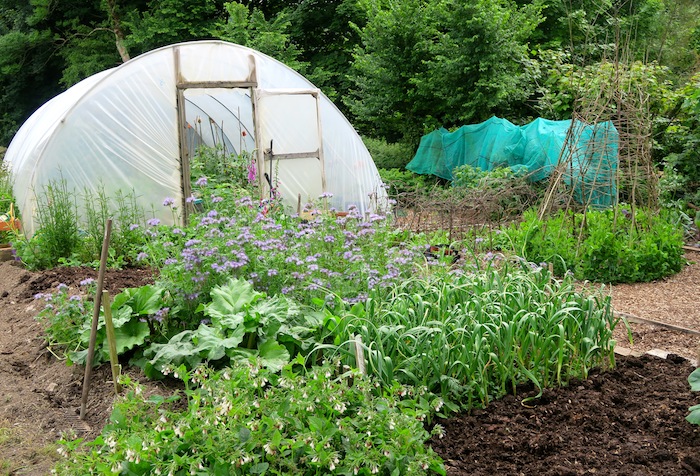
‘The Good Life – It’s All In The Soil’
by Jo Tytherleigh
We know that everything we put into our bodies has an effect upon us. Therefore we try to make healthy choices about what we eat, so as to promote our health and wellbeing to its fullest and most vital.
In the same way, if we want to grow healthy plants we have to give them the correct nutrition. So that they can establish strong roots, grow turgid stems and leaves and produce flowers and fruits. Most of the nutrients that plants need come from the soil.
As growers, the first step is to make sure the soil we are planting into is as healthy, nutritious and full of vitality as we can make it.
Plants grow in Topsoil which is the uppermost layer of the soil. Its depth varies, depending on where you are gardening, it could be about 10cm or up to 50cm. Topsoil is made up of ground up particles of rock, containing a variety of minerals, decayed vegetable matter, water, air, as well as bacteria and micro organisms.
An environment for plants to thrive in contains fairly balanced proportions of 3 main macro nutrients:
Nitrogen (N) – important for leaf growth. Chlorophyll, the green substance in plants responsible for photosynthesis, is largely composed of nitrogen. It is also used for making new shoots, buds and leaves. Air contains about 78% nitrogen, but atmospheric nitrogen is not readily available to plants. They must absorb it through the soil.
Phosphorus (P) – helps plants convert other nutrients into usable building blocks with which to grow. It’s important for healthy roots and is utilised as seeds set and blossoms form. It is released in soil through decomposing organic matter. Phosphorus deficiency is recognized by dull green leaves and purplish stems.
Potassium (K) – often referred to as Potash, it helps plants to regulate their water intake, both through the roots and on a cellular level, and is therefore important in the production of flowers and fruit. Potassium levels affect the plants shape, size, colour, and taste.
Whatever we are growing we need to make sure our topsoil contains good quantities of these macro nutrients so that our plants have the best chance they can to really thrive.
Our Field to Fork blog posts are tasters of what we explore in our live courses. Find out more about the different ways you can enrich your soil in Part Two of the series, coming soon.
In the meantime you can stay connected with us on our social media channels – Facebook,Twitter and Instagram.



